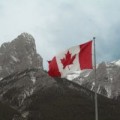The Culture of Canada
While Canadian culture is heavily influenced by British and American culture and traditions, it retains many unique characteristics. In the past few decades, a more robust and distinct Canadian culture has developed, partially because of the nationalism that pervaded Canada in the years leading up to and following the Canadian Centennial in 1967.
The Canada-U.S. border is the world's longest undefended border, and the United States and Canadian governments share a variety of close working partnerships in matters of trade, economics, and legal concerns. As Canada and the United States have grown closer, many Canadians have developed complex feelings and concerns regarding what makes Canada a "distinct" nation within North America. The large American cultural presence in Canada has prompted some fears of a "cultural takeover," and has initiated the establishment of many laws and government institutions to protect Canadian culture. Much of Canadian culture remains defined in contrast to American culture (See Canadian identity). For example, Canadians see their country as a mosaic of unique immigrant cultures, a large picture made up of many distinct pieces, rather than a melting-pot. Media outlets that receive government funding such as the CBC attempt to promote such a view of Canada, although in recent years critics have accused Canadian "cultural" programming as being excessively political. Canadian culture was a topic of international discussion in 2003, when Canada refused to join the US-led 2003 Iraq War, moved toward legalizing same-sex marriage, and took steps towards decriminalizing the possession of small amounts of marijuana. Many international observers saw these developments as distinguishing Canada as more socially liberal than its southern neighbour. Needless to say, within Canada itself, such notions of Canada being a more fundamentally "left wing" country than the US tend to be more widely embraced by political parties on the left than those on the right. Such liberal social policies can probably best be tied to the political dominance of the Liberal Party of Canada over national debate within the last decade.
In terms of national symbols and emblems, the use of the maple leaf as a Canadian symbol dates back to the early 18th century and is depicted on its current and previous flags and coat of arms. Canada is known for its vast forests and mountain ranges (including the Rocky Mountains) and the wild animals that reside within them, such as moose, beavers, and grizzly bears. Canada is also well-known for the Royal Canadian Mounted Police force, and products made from the country's natural resources, such as maple syrup.

